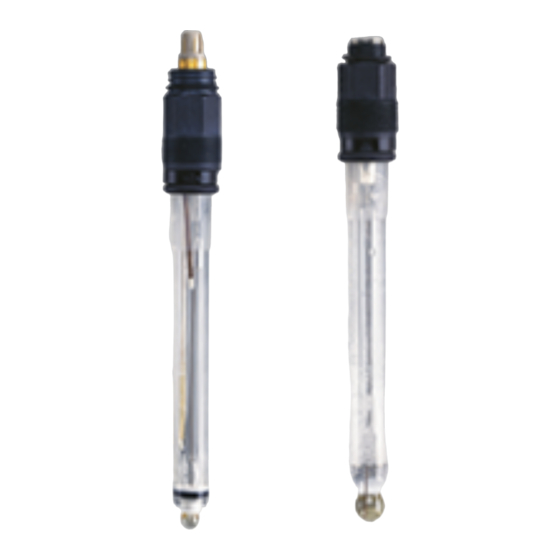
Subscribe to Our Youtube Channel
Summary of Contents for Kobold APS-Z
- Page 1 Operating Instructions pH/Redox Electrodes (Combination Electrodes) Model: APS-Z/APK-Z/ARS-Z...
-
Page 2: Table Of Contents
Service life and warranty ................10 Order Codes ....................11 Disposal ...................... 12 Manufactured and sold by: Kobold Messring GmbH Nordring 22-24 D-65719 Hofheim Tel.: +49(0)6192-2990 Fax: +49(0)6192-23398 E-Mail: info.de@kobold.com Internet: www.kobold.com page 2 APS-Z/APK-Z/ARS-Z K04/1122... -
Page 3: Note
Please read these operating instructions before unpacking and putting the unit into operation. Follow the instructions precisely as described herein. The instruction manuals on our website www.kobold.com are always for currently manufactured version of our products. Due to technical changes, the instruction manuals available online may not always correspond to the product version you have purchased. -
Page 4: Instrument Inspection
Scope of delivery: The standard delivery includes: pH/Redox Electrodes (Combination Electrodes) model: APS-Z/APK-Z/ARS-Z 4. Regulation Use Any use of the device, which exceeds the manufacturer’s specification, may invalidate its warranty. Therefore, any resulting damage is not the responsibility of the manufacturer. -
Page 5: Sensor Installation
Electrodes must be installed vertically. The maximum angle to the vertical is 80°. The internal buffer must cover the inside surface of the membrane glass. Air bubbles in the membrane chamber must be removed by light shaking of the electrode in the vertical. APS-Z/APK-Z/ARS-Z K04/1122 page 5... -
Page 6: Calibration And Measuring
Then adjust the pH/redox value of the first buffer/test solution on the transmitter. Rinse off the pH electrode with deionized water and carefully dry it with a soft cloth. For redox electrodes the calibration is now complete page 6 APS-Z/APK-Z/ARS-Z K04/1122... - Page 7 The measuring instrument determines the zero point and slope of the sensor. Rinse off the electrode with deionized water and carefully dry it with a soft cloth. The calibration is complete. APS-Z/APK-Z/ARS-Z K04/1122 page 7...
-
Page 8: Cleaning
(dishwashing detergent, etc.) Protein Pepsin in diluted hydrochloric acid Accumulation Cleaning mixture consisting of containing sulfides hydrochloric acid and thiourea Inorganic coatings Hydrochloric acid (0.1 mol/l) or caustic soda (0.1 mol/l) page 8 APS-Z/APK-Z/ARS-Z K04/1122... -
Page 9: Maintenance
A drift in measured values after some time is therefore normal measuring behavior. If the measured values drift, the electrode must be cleaned and calibrated! Cleaning and calibrating cycles can be adjusted depending on the application and process parameters. APS-Z/APK-Z/ARS-Z K04/1122 page 9... -
Page 10: Service Life And Warranty
If the glass is broken, claims under the warranty are normally not honored. If you believe there may be a defect in material or manufacturing, please contact your supplier. page 10 APS-Z/APK-Z/ARS-Z K04/1122... -
Page 11: Order Codes
APS-Z/APK-Z/ARS-Z 10. Order Codes Order Details Electrode Example: APS-Z 1 N 1 Model Diaphragm Temperature sensor Device version APS-Z 1 = ceramic-diaphragm N = without temperature sensor 1 = general purpose glass 2 = PTFE-diaphragm (N-screwed head conduit Pg 13.5) 2 = high temperature glass -5…+135 °C... -
Page 12: Disposal
(Cd, Hg, Li or Pb) of the heavy metal that is decisive for the classification as containing pollutants: 1. „Cd" stands for cadmium 2. „Hg" stands for mercury 3. „Pb" stands for lead 4. „Li" stands for lithium Electrical and electronic equipment page 12 APS-Z/APK-Z/ARS-Z K04/1122...
















Need help?
Do you have a question about the APS-Z and is the answer not in the manual?
Questions and answers